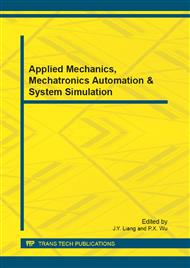p.1250
p.1256
p.1261
p.1265
p.1270
p.1275
p.1280
p.1286
p.1290
Analyses and Implement on Monitoring Insulator ESDD by Optical Spectrum
Abstract:
Aimed at the complicated nonlinear relationship between the flux attenuation and various on salt density factors, the luminous flux attenuation, relative humidity and ash density are chosen as inputs, the ESDD (the equal salt deposit density) is chosen as output, a RBF neural network model which can solve the modeling and control problem preferably in complex system with serious nonlinear is built. This model shows high accuracy after training by orthogonal least square (OLS) learning algorithm.Then ESDD online monitoring system is developed for fieldwork with the application of the model results.
Info:
Periodical:
Pages:
1270-1274
Citation:
Online since:
September 2012
Authors:
Price:
Сopyright:
© 2012 Trans Tech Publications Ltd. All Rights Reserved
Share:
Citation:


